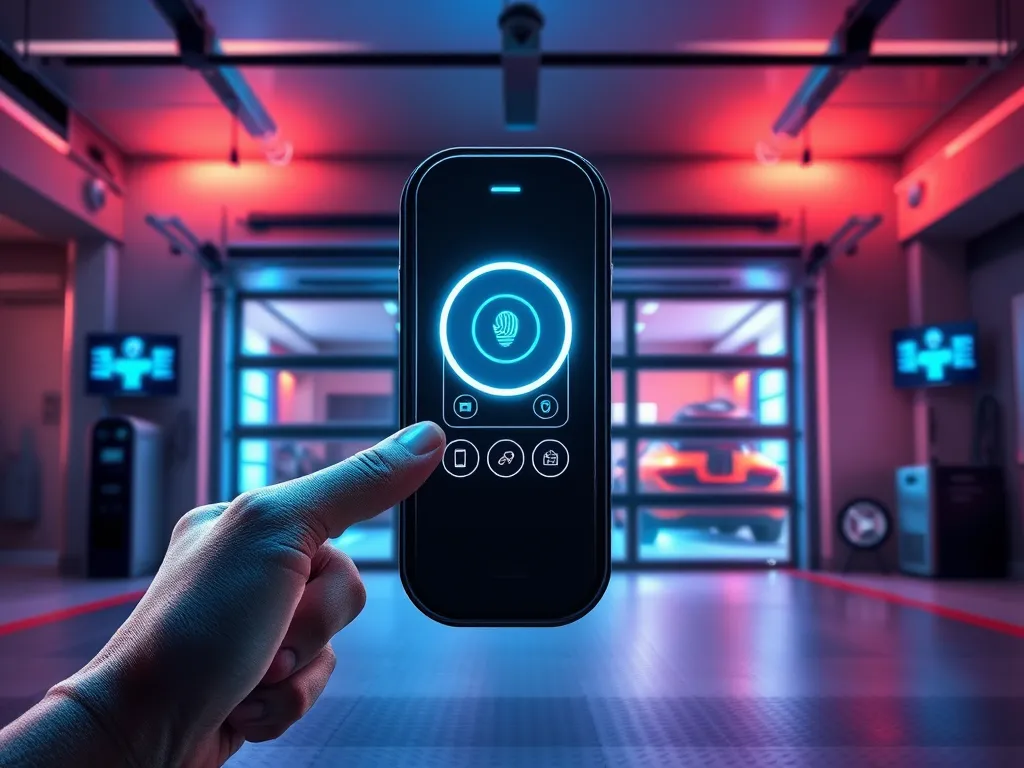Innovations in Garage Door Remote Control Technology

Revolutionizing Access: An In-Depth Look at Garage Door Remote Control Technology
Garage Door Remote Control Technology has transformed the way homeowners access their garages, providing convenience, security, and safety. These devices allow users to open and close garage doors from a distance, eliminating the need to exit the vehicle in adverse weather conditions or when carrying items. Advances in technology have led to the development of smarter and more secure remote control systems that cater to the modern homeowner's needs.
Efficient remote troubleshooting is essential for quick fixes to common issues.
The evolution of Garage Door Remote Control Technology has seen the introduction of various mechanisms, including infrared, radio frequency, and more recently, Wi-Fi enabled devices. These technological advancements facilitate seamless communication between the remote and the garage door mechanism, enabling reliable and efficient operation. As the demand for convenience and home automation grows, so does the need for advanced garage door remotes that integrate with various smart home systems.
Modern Garage Door Remote Control Technology not only focuses on opening and closing doors but also emphasizes safety features and user-friendly designs. These remotes help reduce the risk of accidents, such as children or pets getting caught while the door is closing. Additionally, garage door remotes are now designed to be more ergonomic and aesthetically pleasing, ensuring they fit well within the home environment while still being easy to use.
The integration of Garage Door Remote Control Technology with smart home ecosystems has become increasingly popular. Homeowners can now control their garage doors via smartphones or voice-activated devices, adding an extra layer of convenience. With mobile apps, users can monitor the status of their garage doors in real-time and manage access for family members and trusted guests, making it an indispensable tool for modern living.
In conclusion, Garage Door Remote Control Technology has evolved significantly over the years, offering a blend of convenience, security, and smart home integration. As technology continues to advance, future developments in remote control technology are expected to focus more on user experience, enhanced safety, and seamless integration with other smart home devices.
Smart Garage Door Remotes
Smart Garage Door Remotes have emerged as a significant part of modern home automation. These devices can be easily integrated with various smart home systems such as Google Home or Amazon Alexa, allowing homeowners to control their garage doors using voice commands or through automated routines. This level of integration enhances user convenience and streamlines access to homes.
Mobile app control features are a standout component of smart garage door remotes. Through dedicated applications, users can open or close their garage doors remotely, ensuring they never have to worry about leaving the garage door open accidentally. Moreover, these apps can provide real-time notifications and reminders, improving security and peace of mind.
Implementing smart home integration can significantly enhance your home's convenience.
Voice-activated remote functionalities are also a key characteristic of smart garage door remotes. Homeowners can simply instruct their smart devices to open or close the garage door without lifting a finger. This hands-free feature is especially useful for people carrying groceries or packages, promoting effortless access to the garage.
rolling code security is a critical feature for modern garage doors.
Remote monitoring and alerts are additional benefits of smart garage door remotes. They allow users to check whether their garage door is open or closed at any time. Some systems even send alerts to homeowners' smartphones when unusual activity is detected, thereby optimizing security and enabling timely intervention when necessary.
Security Features of Garage Door Remotes
Security is a paramount concern when it comes to Garage Door Remote Control Technology. Advanced encryption and security protocols are now implemented in many garage door remotes to prevent unauthorized access. Encryption ensures that signals sent between the remote and the garage door opener are secure, reducing the risk of hacking.
Two-factor authentication methods add an extra layer of security for garage door remote control systems. Users may need to input a unique code in addition to pressing the remote button, enhancing access security. This dual-step verification process ensures that even if someone obtains the remote control's signal, they cannot access the garage without the second authentication factor.
Tamper-proof designs have become a standard in Garage Door Remote Control Technology. These designs discourage physical tampering and prevent accidental signal activation. With features such as robust casings and lockable compartments, users can ensure that their remote systems remain secure while preventing unauthorized use.
Alerts for unauthorized access are increasingly common in modern garage door remote systems. These alerts notify homeowners if their garage doors are accessed without the remote's input, allowing for prompt action. This feature aids in enhancing home security and giving users peace of mind regarding their property safety.
Trends in Garage Door Remote Design
One of the trends in Garage Door Remote Design is the focus on ergonomic design for ease of use. Manufacturers are prioritizing comfort and functionality, resulting in remotes that are easy to grip and operate, even for those with dexterity issues. The more user-friendly designs mean that everyone in the household can manage the garage door effortlessly.
Sustainability in materials has become an important aspect of Garage Door Remote design. Many manufacturers are shifting towards eco-friendly materials, ensuring that the production and disposal of these devices have a minimal environmental impact. This trend reflects the growing consumer preference for sustainable products in all aspects of home technology.
Customization options for consumers are another exciting trend in garage door remotes. Many brands now offer customizable features, allowing users to select colors, finishes, and styles that match their home decor. This personal touch promotes user satisfaction and enhances the overall aesthetic appeal of the remote controls.
Color and aesthetic trends are increasingly influencing garage door remote designs; sleek and contemporary looks are preferred to align with modern home aesthetics. Manufacturers are exploring various shapes and styles, appealing to a broad range of consumer preferences and enhancing the visual appeal of the devices.
Troubleshooting Garage Door Remote Issues
Common problems with Garage Door Remote Controls include unresponsive buttons, faulty batteries, or interference from other devices. Homeowners can often resolve these issues by checking the battery level, ensuring the remote is properly synced with the garage door opener, or relocating devices that may be causing interference.
Battery maintenance tips are crucial for ensuring the long life of garage door remotes. Regularly checking and replacing batteries can prevent unexpected failures. Additionally, users are advised to store remotes in a cool, dry place to prolong battery life and avoid damage.
Resetting remote controls can solve various issues, including connectivity problems. Most remotes come with specific instructions on how to reset them and re-sync them with the garage door opener. This process is often straightforward and can restore functionality quickly.
Compatibility with different garage door systems can present challenges. Homeowners should always verify that the remote they purchase is compatible with their specific garage door opener model. Studies recommend checking manufacturer guidelines to ensure a smooth experience with remote controls.
Future of Garage Door Remote Control Technology
Emerging technologies and innovations in Garage Door Remote Control Technology are leading to smarter, more efficient systems. Future developments may involve advanced sensor technology and automated closed/open functions that respond to user habits and preferences, making access even more convenient.
Predicted trends for the next decade suggest an increased focus on IoT (Internet of Things) integration. This means that garage door remotes will likely become part of a larger network of connected devices, enabling seamless communication and enhanced security features across the home.
The impact of IoT on garage door systems is set to be profound. As homes become smarter, garage door remotes will evolve to work in conjunction with other home automation devices, potentially offering features like automated closes based on home occupancy status or activating after a specified time of the day.
Potential for AI integration in remotes is an exciting prospect on the horizon. AI technology may enable garage door remotes to learn user preferences, offering personalized experiences and optimizing the overall system based on data analytics. Such advancements are poised to revolutionize user convenience and efficiency in managing home access.
